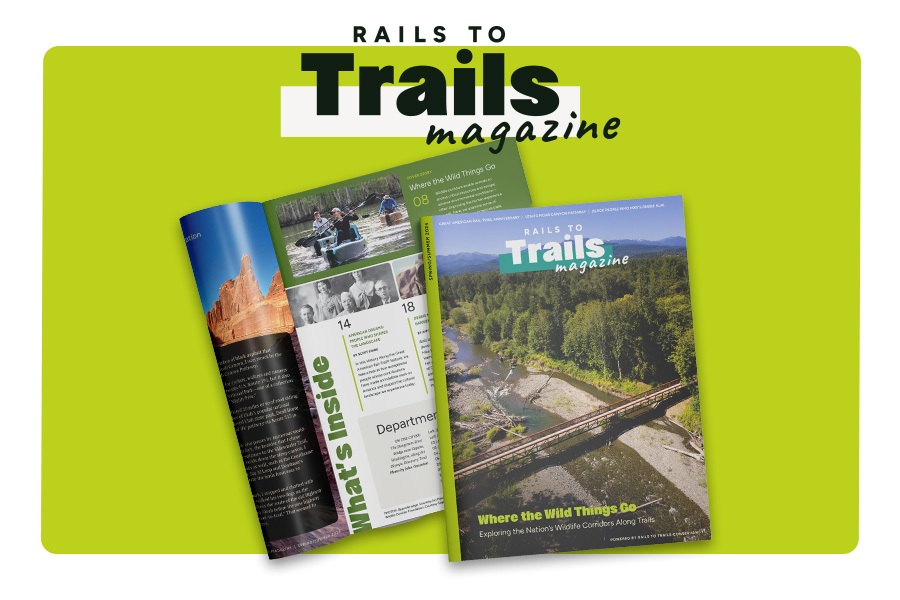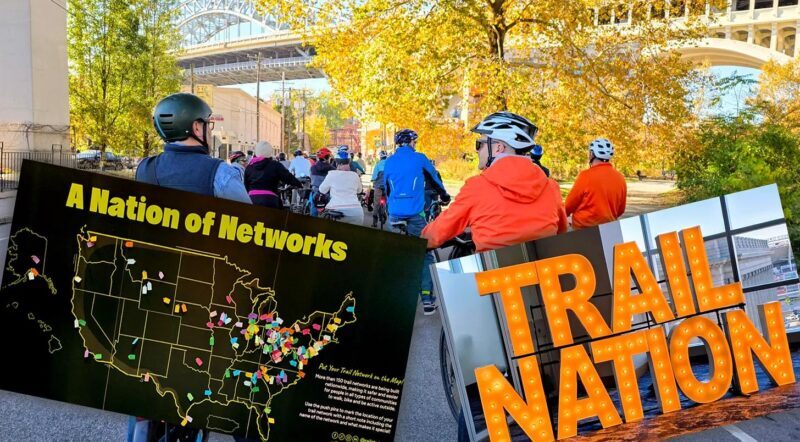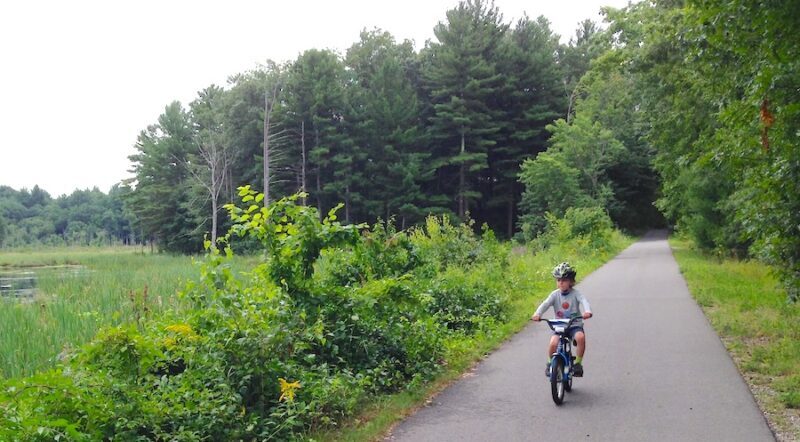The Great Connector: How West Virginia’s Greenbrier River Trail Is Fostering Recreation and Revitalization in the Allegheny Highlands
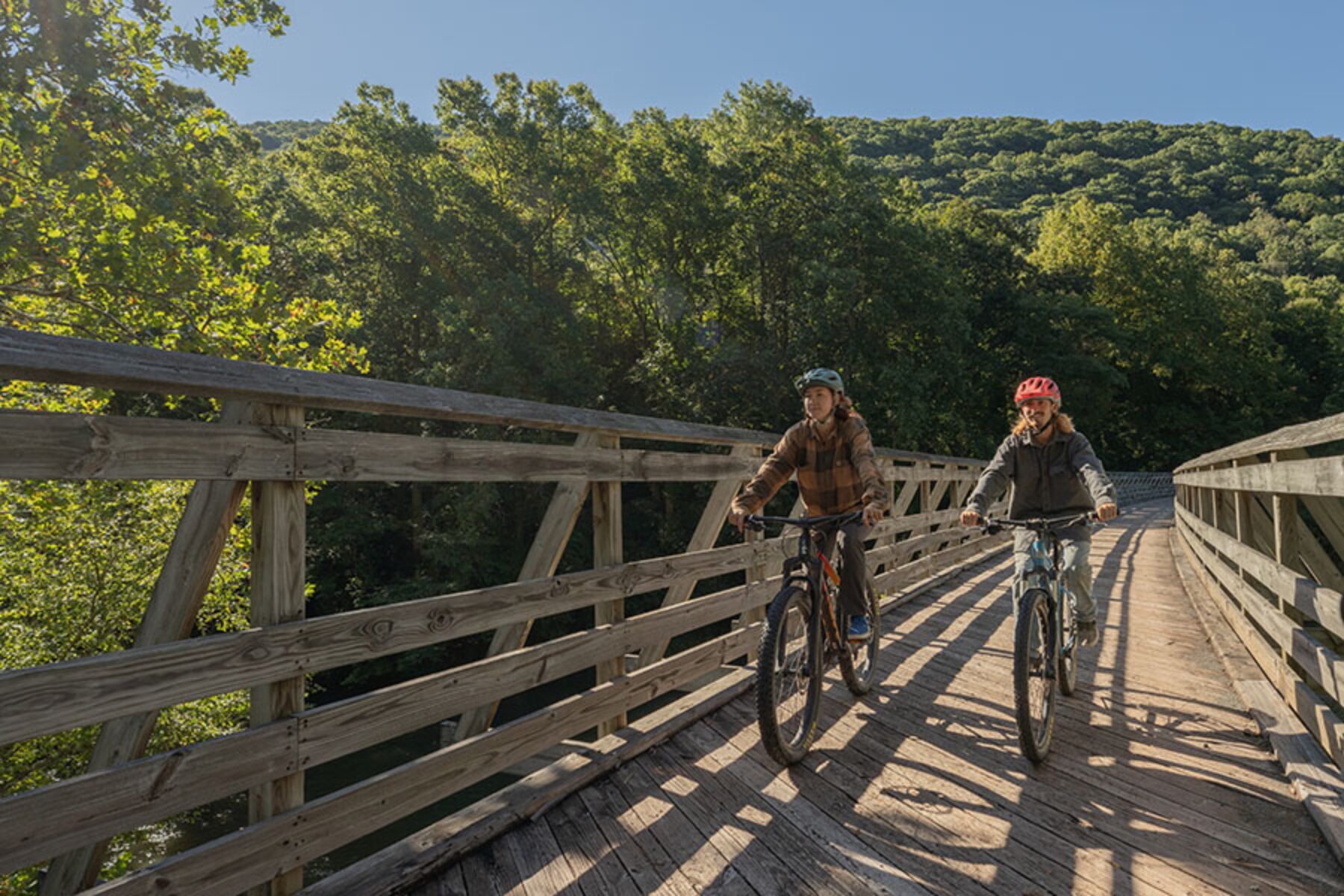
For 45 years, the Greenbrier River Trail has fostered recreation, relationships and economic revitalization in the Allegheny Highlands of West Virginia.
In June 2016, as a massive thunderstorm system triggered mudslides, rockslides and catastrophic flooding across the mountains of southern West Virginia, Nancy Harris’ thoughts turned to the Greenbrier River Trail.
“My first thought was that it would be wiped out,” Harris said of the trail she has ridden almost every day for the past 30 years. “Then it was: What can I do to help?”
Luckily, the trail, while damaged in places, wasn’t wiped out. And, when cleanup began in the region, Harris figured out how to help: by cleaning toilets.
“I volunteered to clean the bathrooms along the trail,” Harris told me over coffee at a Marlinton, West Virginia, restaurant a block from the trail. That way, she figured, the tiny West Virginia State Parks maintenance crew—who oversees the entire 77.1-mile rail-trail as well as two other nearby state parks—would be free to do the heavier lifting, repairing washed-out roads and clearing fallen trees. “They were more than glad to be relieved of that.”
Created with a bill signed by Gov. Jay Rockefeller in 1980, the Greenbrier River Trail has been spurring outdoor and economic connections for the towns of rural West Virginia’s Allegheny Highlands for 45 years and counting.
COUNTIES: Greenbrier, Pocahontas
LENGTH: 77 miles
ENDPOINTS: Cass and Caldwell
USES: Walking, biking, horseback riding, fishing, cross-country skiing, mountain biking. Please contact the trail manager to inquire about wheelchair use.
Harris was given permission to drive the crushed-stone trail, which hues to the emerald-green Greenbrier River as it carves through the verdant spruce forests and golden valleys of the Allegheny Highlands, but the 77-year-old retired vocation rehabilitation counselor was determined to ride.
“I put a broom and a Swiffer on the back rack of my bike, carried the toilet paper and the hand sanitizer and the cleaning stuff in a backpack, and just took off!” she said. Sometimes Harris would begin her janitorial duties from her home in Lewisburg, West Virginia, about 5 miles from the trail’s southern terminus; sometimes she would drive to a trailhead farther north and start from there. Either way, each of the trail’s six bathrooms was serviced every week.
Perhaps more remarkable than this selfless act of volunteerism is Harris’ account of it almost 10 years later: “It was cool! It was very cool!” she said. So cool, in fact, that Harris performed the job for three seasons, gratified to do her part for the trail that she said has provided her with so much—a safe place to exercise, stirring encounters with wildlife and friendships with other trailgoers like Lyn Guy, who joined us for our pre-ride coffee on a mild morning in March.
Guy drives 30 miles from her home in Rock Camp, West Virginia, nearly every day to ride the trail. “I feel so good when I go over there,” the 72-year-old former school administrator said. “It’s almost spiritual.”
This is the kind of enthusiasm you hear from people who spend their time on the Greenbrier River Trail. Opened as a recreational multiuse trail in 1980, it is one of the oldest rail-trails in the country and a Rails to Trails Conservancy Hall of Famer, as well as one of 52 Millennium Legacy Trails in the United States. Noted for its length and gentle grade, the trail has been attracting locals and visitors alike for 45 years with the promise of space and solitude next to the longest undammed river in the East.
In addition to recreational opportunities and stunning scenery for users, the Greenbrier River Trail has also provided a meaningful boost in economic development for the region, drawing new businesses, new residents and countless tourists to the mountains of southern West Virginia.
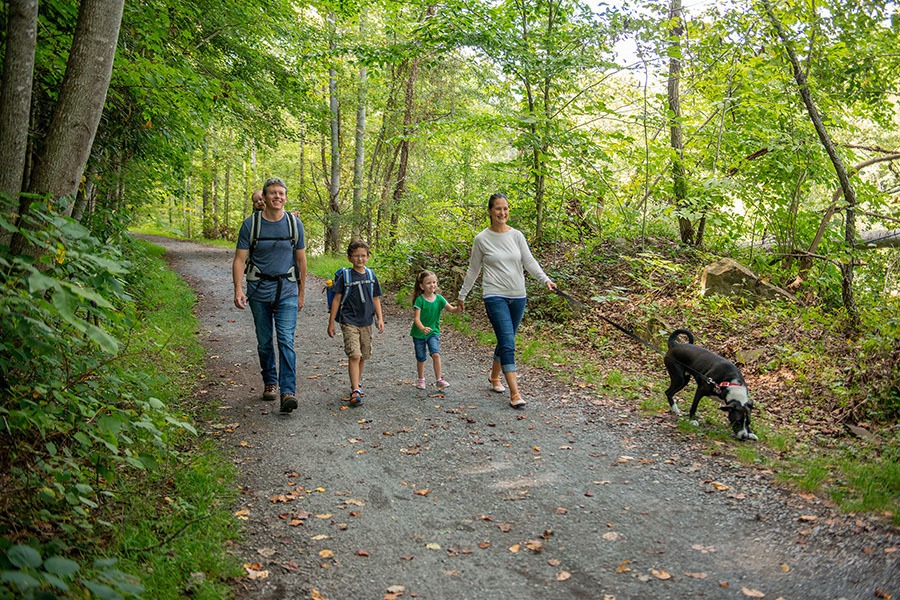
This article was originally published in the Spring/Summer 2025 issue of Rails to Trails magazine and has been reposted here in an extended format. Subscribe to read more articles about remarkable trails while also supporting our work.
From Rails to Trail Races
The Greenbrier River Trail uses the former corridor of the Greenbrier Division of the Chesapeake and Ohio (C&O) Railroad, which opened in 1900 and stretched across Greenbrier and Pocahontas counties. Unlike most C&O rail lines in West Virginia, this one was not built to carry coal, but rather to transport fur and timber from what is today Monongahela National Forest. Soon, sawmills and tanneries popped up along the railroad, and communities next to the tracks filled up with residents.
While the timber quickly ran out, the line continued to see use, moving freight and people, especially during World War II’s rationing of gasoline and tires. But over the following three decades, the sound of train whistles faded across the Greenbrier Valley. The last diesel engines ran down the Greenbrier Division Line during the waning days of 1978.
That was right around the time Rob Gronan moved to town.
“I had just moved to this area for a new job from Columbia, Missouri, and I had been working on what became the Katy Trail there,” said Gronan, referring to the longest continuous rail-trail in the country. “I was kind of despondent over having to leave that effort.”
When someone told him that a nearby railbed had just been turned over to the state, Gronan, a retired emergency medicine specialist, dusted off his community organizing skills and fired up his slide projector.
“I went around to different groups and talked about the concept of rail-trails,” he said. “There weren’t that many at the time.”
One of the groups that invited Gronan to speak was a local Rotary Club, where a state senator just happened to be in attendance. Weeks later, Gronan found himself at the West Virginia Statehouse, advocating for a rail-trail in the Greenbrier Valley. “They couldn’t turn it down,” Gronan said. On March 24, 1980, then-West Virginia Gov. Jay Rockefeller signed a bill creating the Greenbrier River Trail State Park.
The park runs from the village of Caldwell in the south to the former company town of Cass in the north—where visitors can still enjoy a number of scenic train rides and bunk in a restored company house. Along the way, it passes through or next to five other state parks and state forests. Jody Spencer, the superintendent of nearby Watoga State Park, who oversees the trail, said that it has long been pivotal in a region where views are plentiful, but where safe and accessible recreation opportunities are in short supply.
“A lot of seniors aren’t comfortable biking on the road. A lot of young families have young kids who are just learning to bike,” Spencer said. “But, at the same time, if you want a little bit of adventure, you can pack in all 80 miles and rustic camp along the way.”
Those looking for a little friendly competition can also enjoy the trail during the Greenbrier River Trail marathon or the Great Greenbrier River Race triathlon (with kayaking instead of swimming), both hosted by the Greenbrier River Trail Association, which was founded by Gronan in 1979 and now counts Nancy Harris and Lyn Guy among its board members.
“Some people are very serious about it, and other people are just having a darn good time,” said Harris, who volunteers during both events. But what really stands out to her during race weekends is the size and diversity of the crowd.
“I’m always amazed,” she said. “People come from all over the United States to participate.”
The National Radio Quiet Zone: How to Enjoy the Peace and Quiet—Safely
While most trails offer a chance to disconnect from technology for a while, on the Greenbrier River Trail, disconnect you must. That’s because much of its 77.1 miles fall in the National Radio Quiet Zone (NRQZ), established by the federal government in 1958 to limit interference with the nearby National Science Foundation’s Green Bank Observatory and the National Security Agency’s Sugar Grove facility. Inside the approximately 13,000 square miles of the NRQZ, your phone won’t be able to make calls or connect to the internet. Your Bluetooth headphones won’t work either.
To be safe, be sure to research your trip ahead of time, bring a fully stocked first-aid kit, and let someone know where and when you’ll be on the trail.
It’s worth taking the extra precaution for the peace and quiet you’ll enjoy in one of the few places left in the world where work emails and news alerts can’t find you. Additionally, the Green Bank Observatory, about 15 miles from the trail in Marlinton, makes for a great side trip. Here, the Robert C. Byrd Green Bank Telescope—the world’s largest fully steerable radio telescope—searches the sky to investigate everything from near-Earth asteroids to the environments surrounding super massive black holes.
Visitors can check out an exhibit hall, choose from a variety of guided, behind-the-scenes tours or wander the tranquil grounds on their own.
Miles of Economic Development
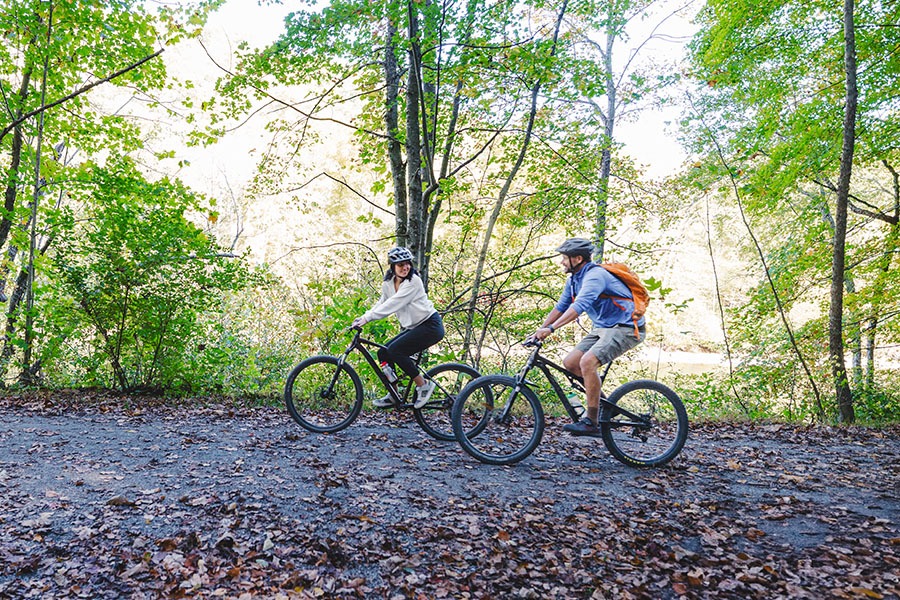
“That’s our bread and butter. Without the trail, this business would not be here.”
—Scott Guyette, Owner, Greenbrier Bikes
Like the old railroad, the Greenbrier River Trail has brought an influx of people and dollars to the towns that dot the Greenbrier Valley. A 2015 West Virginia University economic impact study estimated that the trail brought in over $5 million in visitor spending that year.
But the last time anyone did a detailed study to quantify the true impact was nearly a quarter century ago, when a Marshall University survey found that, during a 17-day period in October 2000, two-thirds of trail users were high-income visitors from outside West Virginia, spending approximately $82,315 ($167,000 in today’s money) at area hotels, restaurants and shops.
While they may not have any recent data to point to, trail advocates like Guy and Harris have plenty of anecdotal evidence that the trail delivers a big economic boost to the region, which has struggled since the mines and mills of the last century were shuttered.
Guy said many of her neighbors in nearby Monroe Country drive to the trail regularly to bike, walk or fish, spending their money afterward in shops and restaurants. “I do know for a fact that people move here because of the trail,” Harris added.
One of those people is Craig Attkisson, a Richmond, Virginia, landscape contractor who has bikepacked all over the world. “My heart was singing when I first rode the [trail],” the 43-year-old said. “My wife and I loved it so much we bought a cabin in Cass.”
“The number of cabins along the trail used as overnight rentals has skyrocketed,” according to Spencer. While the park system doesn’t keep track of trail users, the superintendent said that “businesses along the trail have increased tenfold, and there are more shuttle services than ever. The economic benefit is just tremendous.”
During my trip to Marlinton—which thrived during the railroad era with a tannery, two banks, two newspapers and even an opera house—I conducted my own informal survey to learn how the Greenbrier River Trail impacts livelihoods in the largest town (at fewer than 1,000 residents, “large” is a relative term) on the trail.
“We’re so grateful it exists,” my host at the Moore House Inn told me. In the year since Caley Gonyea and her husband bought the inn, they’ve hosted countless trail users from surrounding states—and farther afield. In fact, Gonyea said, the season’s first guests were bike riders from Alabama.
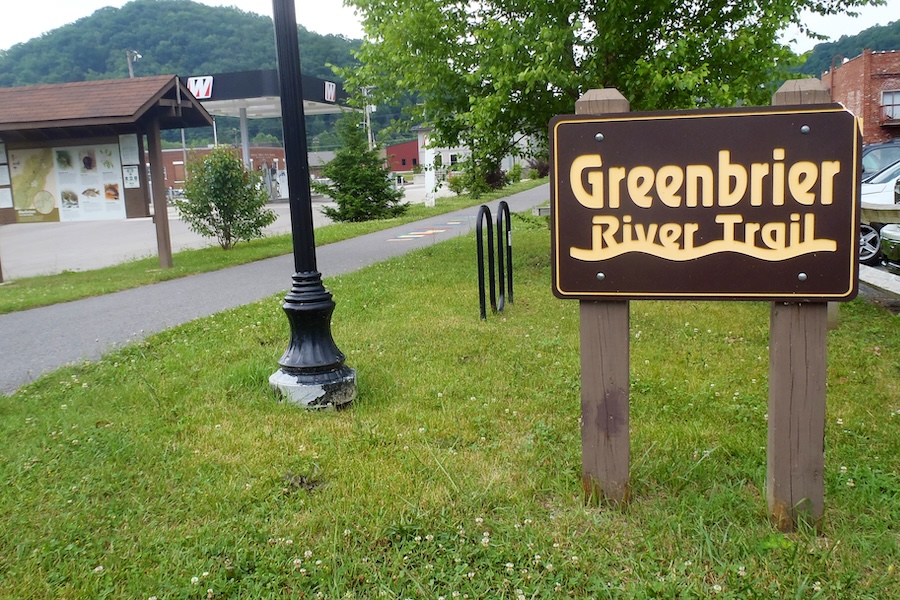
Down the street at the recently opened Dari Land, a server named Patrick took a break from dishing out hamburgers and ice cream to explain that the owners chose this location specifically for its proximity to the Greenbrier River Trail. “We get lots of people coming in off the trail,” he said. So many that the restaurant recently invested in a large bike rack to contend with the constant pileup of bikes out front.
At the nearby HandMade WV Market, owner Anne Walker said that the trail provides a “constant flow” of customers to her shop, which sells local art, crafts and produce. It’s even helped her expand her business; she now offers packed lunches—full of locally grown fruits and veggies—to trail users who call ahead.
Next door, expansion is top of mind for Scott Guyette, owner of Greenbrier Bikes. This summer, he’s relocating the business to a former grocery store around the block and across from a new trailhead the city is developing that will feature 60 parking spaces, two shelters and a food truck plaza. The move will effectively triple his floor space.
Greenbrier Bikes sells and repairs bikes but relies heavily on renting bikes to visitors to the area. “That’s our bread and butter,” he told me. “Without the trail, this business would not be here.”
In short, my time in Marlinton revealed how integral the trail is to the economic health of the residents there. But Superintendent Spencer thinks the “true benefit of the trail is so large and varied that it’s hard to grasp the scope of it.”
For the well-being of residents, of nearby communities and of locally owned businesses, “those benefits are so big that we may not fully understand them,” he said. “In my mind, it’s underappreciated.”
Building Bridges
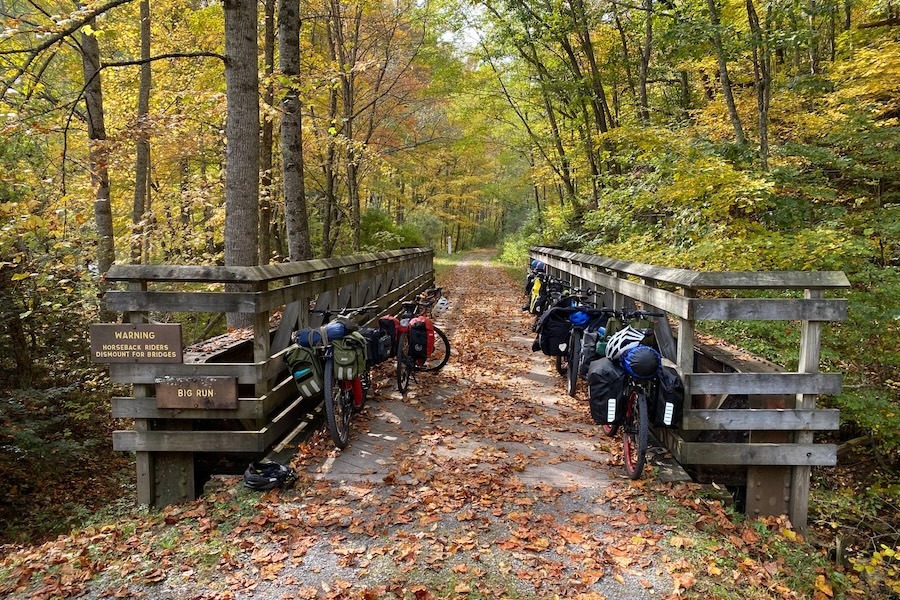
The sun was nearly overhead by the time Harris, Guy and I set off for our ride. The duo were eager to show me the attractive signage the Greenbrier River Trail Association had recently installed along the river. Paid for by a grant from the U.S. Department of Agriculture, the interpretive signs detail everything from railroad heritage to the unique geology of the area.
The old white “whistle post” mile markers were looking brand-new, too, thanks to volunteers like Guy and Harris, who recently scrubbed their nooks and crannies with toothbrushes.
“The [association] are our longtime partners and friends,” Spencer told me later. “We’re proud of the work they do.”
That includes, he said, the group’s recently revamped website, a project spearheaded by Attkisson, a new member of the association board.
“It was the website that I wanted when I bikepacked the trail,” he said, including an interactive map that displays points of interest like campsites, restaurants, bathrooms and bike shops. Attkisson pointed out that because much of the trail is in the National Radio Quiet Zone—a Wi-Fi-free area around the world’s largest radio telescope at nearby Green Bank Observatory—preplanning is a must. “You can’t research while you go,” he said.
The association’s next project is a big one. As we rode, Harris told me about the herculean effort that has gone into redecking the trail’s 37 bridges. In 2022 and 2023, the group received $1,429,000 from the U.S. Department of Transportation’s federal Transportation Alternatives grant program, which will cover about 80% of the project. The association has spent the last four years fundraising furiously to cover the rest.
As Harris, Guy and I rode over bridge after bridge, it was easy to see why the project is such a priority. “One or two bridges out of service would ruin the whole thing,” Spencer told me.
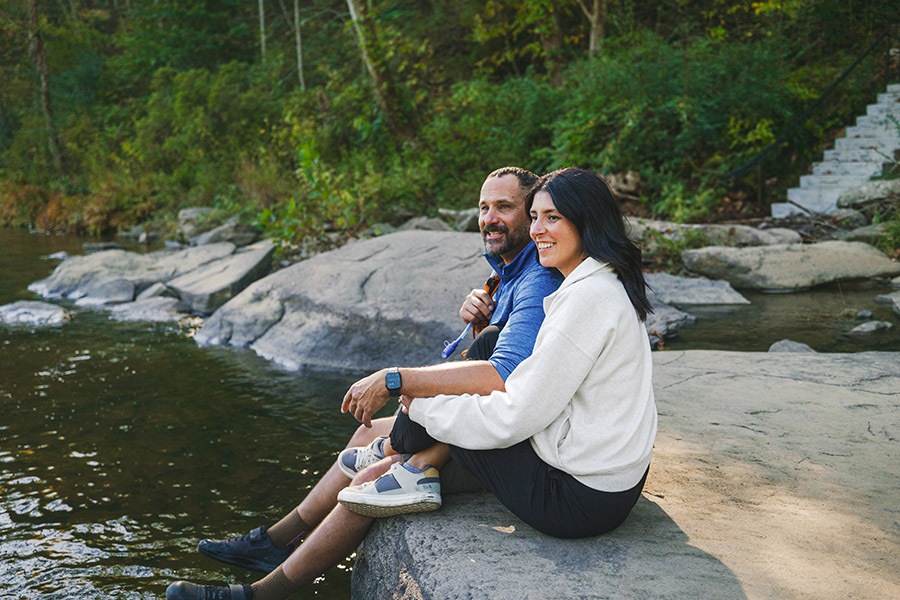
About 10 miles north of Marlinton, we came to our destination: the 511-foot-long Sharps Tunnel, where the air inside still felt like January. Before turning around, we paused to enjoy the warmth of the early-spring sunshine, the rush of the jewel-toned river, a morning spent with new friends. Standing there, bike balanced on my hip, I could see why people develop such an affinity for this trail.
“I think the trail just brings out the positive in people,” Harris said, explaining that during those years when she was cleaning the bathrooms, she was always struck by how respectfully trail users had treated the shared areas, picking up after themselves and others.
“Trails in general, they connect people, unite people, and remind them of what they have in common,” she continued. “Politics, differences—all that stuff just falls by the wayside.”
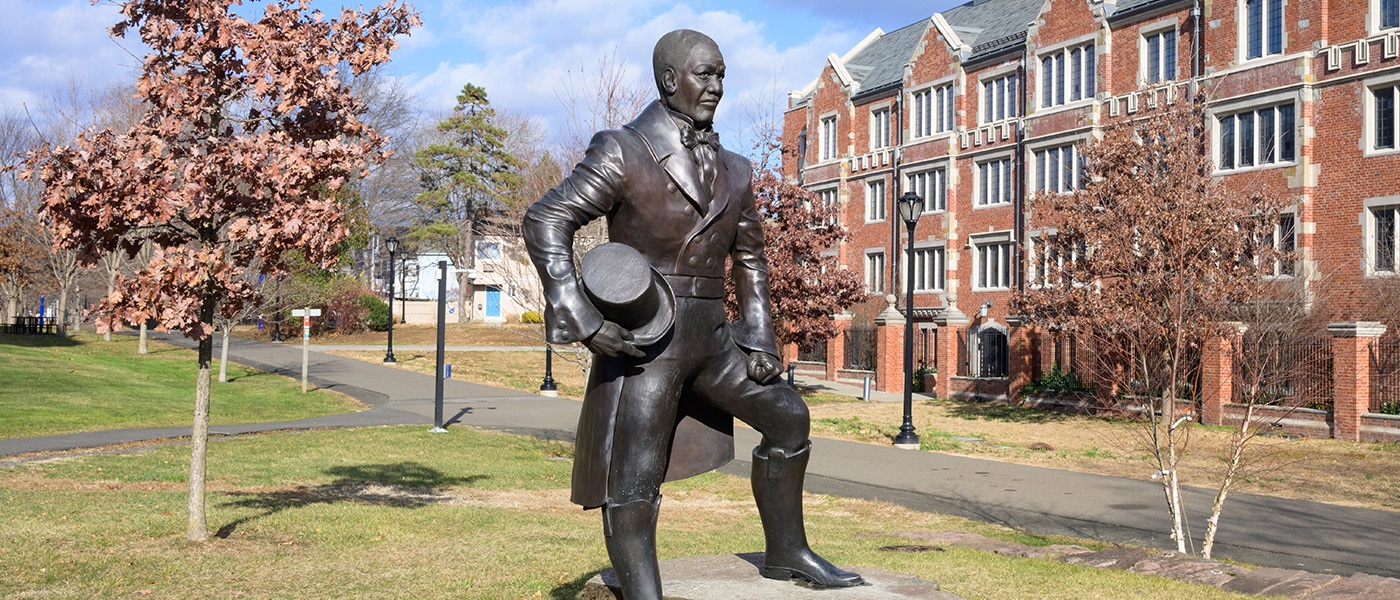
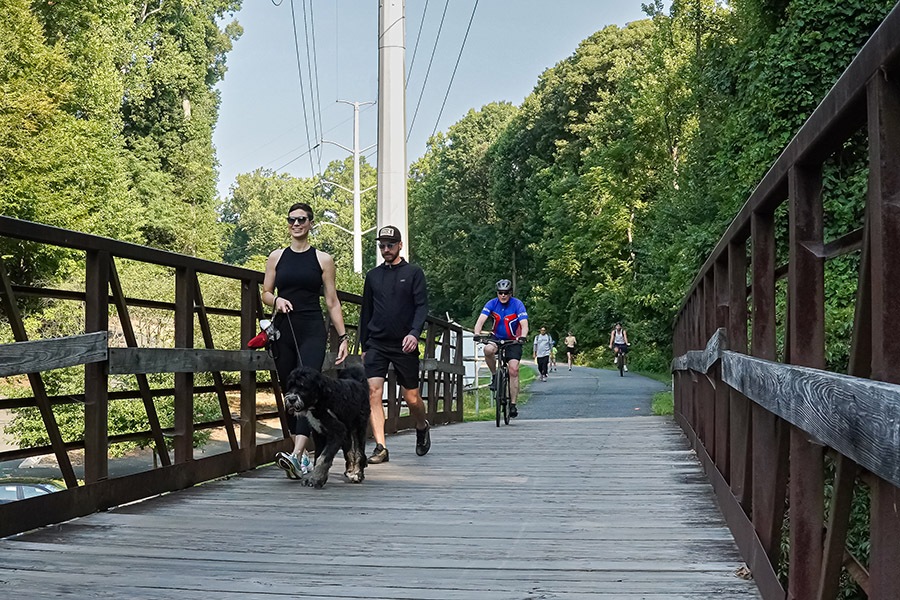
Subscribe to the Magazine
Rails to Trails magazine is a benefit of membership to Rails to Trails Conservancy, which is $18 a year, $4 of which supports the magazine. In addition to the magazine, members receive discounts on RTC gifts and publications.
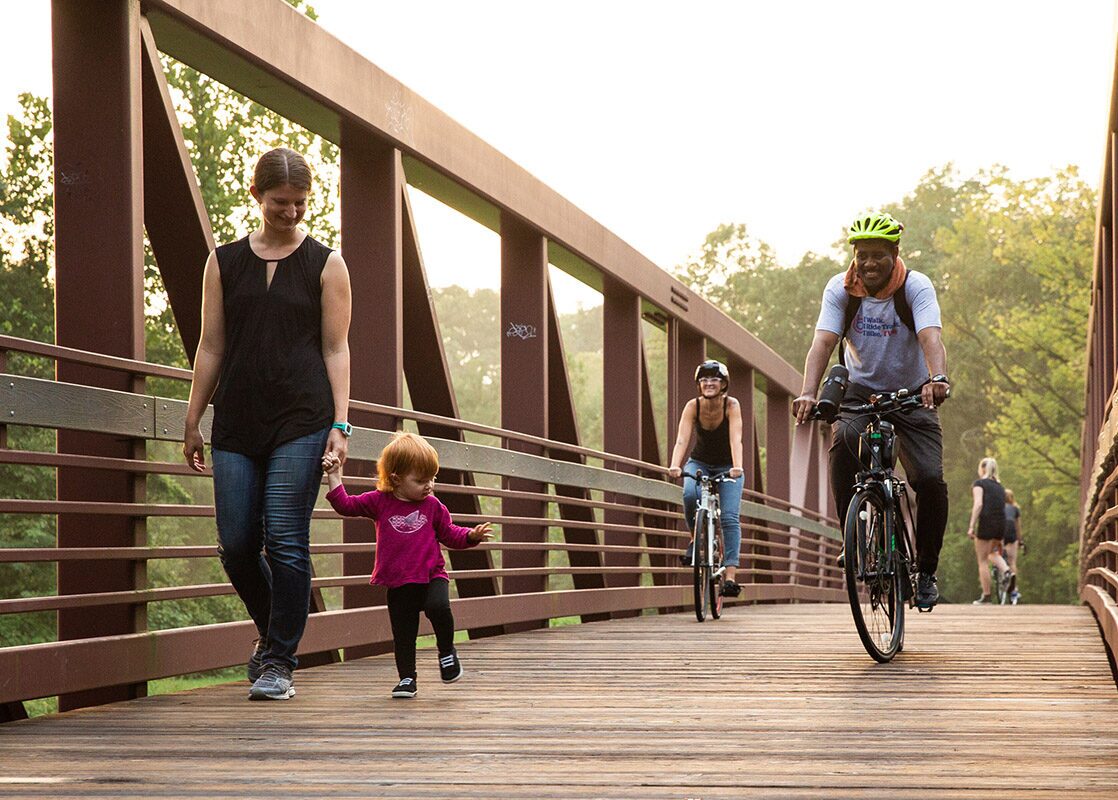
Donate
Everyone deserves access to safe ways to walk, bike, and be active outdoors.
